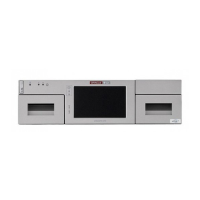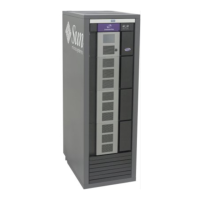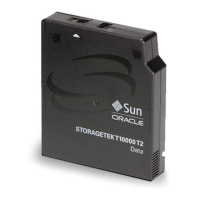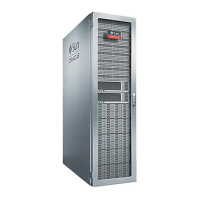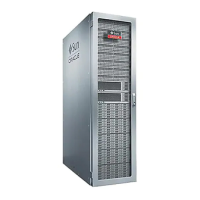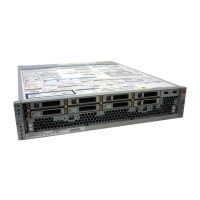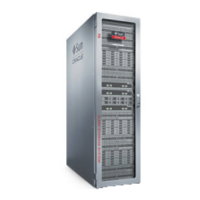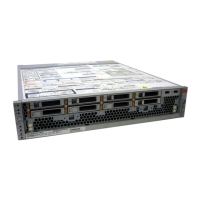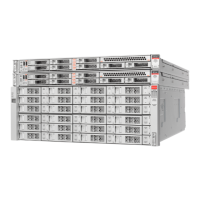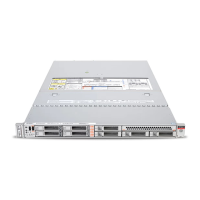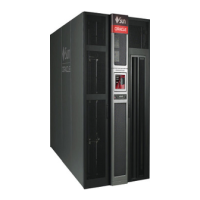
Do you have a question about the Oracle StorageTek SL8500 and is the answer not in the manual?
| Model | StorageTek SL8500 |
|---|---|
| Form Factor | Modular |
| Type | Tape Library |
| Cartridge Capacity | Varies by cartridge type |
| Drive Support | LTO, T10000 |
| Drive Slots | Up to 32 |
| Data Transfer Rate | Varies by drive type |
| Interface | Fibre Channel |
| Connectivity | Fibre Channel |
| Management Interface | Web-based |
| Robotics | Dual robotic arms |
| Dimensions | Varies based on configuration |
| Power Requirements | Varies by configuration |
| Operating Environment | Data Center Environment |
| Scalability | Highly Scalable |
Details new features and enhancements in the latest firmware version.
Lists bug fixes implemented in the latest firmware release.
Lists verified LTO drive firmware versions for the SL8500.
Describes the CIM, SEM, and RIM modules of the library.
Explains the ECM's function and components (HBCR, HBT).
Provides failover protection with redundant controller cards.
Explains CAPs and their types (Bulk CAP, Rotational CAPs).
Describes the function of elevator modules.
Explains PTP function for inter-library communication.
Explains the function of the service safety door.
Lists compatible tape drive models.
Explains how capacity is determined by SEMs and activation.
Describes N+1 and 2N power redundancy options.
Details the features of the standard N+1 power configuration.
Details the features of the 2N power configuration.
Details the limits for partitioning a single library.
Details the limits for partitioning a library complex.
Describes library connectivity and network topology options.
Lists options for host connectivity and redundancy.
Describes the SLC GUI application for library management.
Centralized library management software for open-systems.
Manages volume pools and communication with the library.
Host software for managing virtual tape libraries.
Intelligent monitoring application for tape storage.
Steps for ordering the SL8500 library and components.
Details the components included in the base library.
Describes the capacity increase provided by SEMs.
Lists available hardware options for the library.
Explains PTPs for library complex connectivity.
Describes encryption key management options.
Provides information on T10000 drive configurations.
Guides selection of power redundancy and AC configuration.
Details DC power supply requirements.
Lists features enabled by activation files.
Information on different interface cables.
Provides library dimensions and weights for space planning.
Lists total pallet weights for various library configurations.
Provides individual pallet sizes and weights.
Ensures adequate space for library and expansions.
Discusses weight and coplanar requirements for the floor.
Ensures floor can support library weight and load distribution.
Details robot travel plane and floor leveling needs.
Specifies minimum ceiling clearance for module installation.
Explains particulate limits and dangerous gasses.
Details airflow requirements based on library configuration.
Details the components of the DEM, RIM, and CIM.
Describes Standalone, Web-launched, and Local Operator Panel SLC versions.
Steps to download the SLC media pack from Oracle.
Procedure for installing the web-launched SLC server.
Procedure for initial login and password change.
Steps to log into the standalone SLC version.
Steps to log into the web-launched SLC.
Procedure to download activation files from Oracle.
Steps to apply default capacity settings.
Steps to create custom capacity in a single library.
Steps to create custom capacity in a library complex.
How to resolve cartridge errors after capacity changes.
Best practices for customizing capacity.
Steps to partition the library using SLC.
Steps to delete a partition and release its resources.
Steps to allocate resources for a single library partition.
How to resolve cartridge errors after partitioning changes.
Tips for optimizing performance with partitioning.
Steps to load cartridges into a CAP.
Tips for optimizing CAP usage for performance.
How to lock or unlock a CAP.
Procedure to override CAP reservations.
Best practices for using CAPs.
Explains managing drive cleaning with software.
Steps to enable automatic cleaning from the host.
Tips for optimizing performance via drive placement.
Steps to move cartridges using SLC.
Steps to find cartridges using Volume ID.
Steps to find cartridges using their address.
Steps to import diagnostic or cleaning cartridges.
Tips for optimizing performance through cartridge placement.
Lists prerequisites for media validation.
Steps to define a pool of drives for validation.
Steps for performing a physical audit of the whole library.
Steps for performing a verified audit on a range.
How to view the library's current operational state.
How to view library configuration details.
How to view reports using the Reports Utility.
How to generate partitioning reports for single libraries.
How to capture diagnostic files for support.
Explains how to monitor library events.
Steps to start an event monitor.
Steps to take the library offline.
Steps to take a specific device offline.
Steps to bring a specific device online.
General troubleshooting tips and checks.
Steps to define a diagnostic move routine.
How to check controller card status via LEDs and SLC.
Guides for troubleshooting host connectivity issues.
Steps to safely power down the library.
Steps to safely power up the library.
Safety measures to follow when entering the library.
How to use the EMS switch to stop robots.
How to operate the service safety door.
Details requirements for media validation.
Lists requirements for single and complex library partitioning.
Lists requirements for RE feature.
Initiates a physical audit of the entire library.
Performs a physical audit of a single address.
Performs physical audits on a range of addresses.
Forces the release of a CAP reservation.
Locks or unlocks a specified CAP.
Exports selected cleaning cartridges.
Exports a specific cleaning/diagnostic cartridge to a CAP.
Displays summary drive information.
Configures and displays network configuration.
Sets capacity for a designated partition.
Translates slot addresses between HLI and library formats.
Details the internal library addressing format.
Explains the HLI-PRC addressing format.
Overview of internal library addressing components.
Explains internal addressing for drives.
Inventory of cartridge locations and status.
